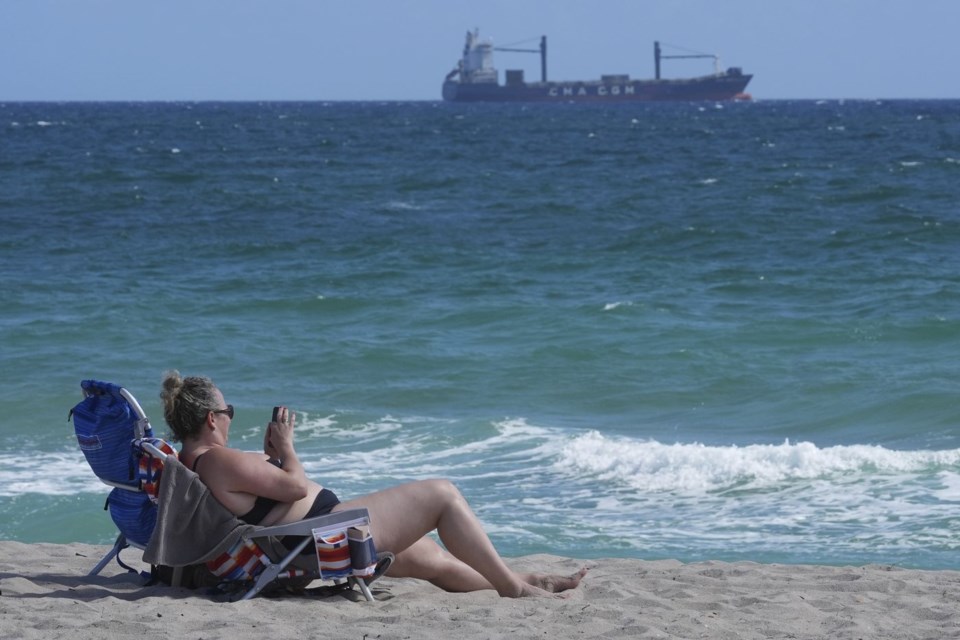FORT LAUDERDALE, Fla. (AP) — The U.S. Coast Guard has been searching for tar balls that began showing up on south Florida beaches over the weekend, but so far the source of the black muck remains a mystery.
The agency has been investigating reports of tar balls from Port Everglades to Palm Beach along the coast of the Atlantic Ocean, the Coast Guard said in a statement.
Some beaches in south Florida closed on Saturday when tar balls washed ashore, but they've since reopened.
What are tar balls?
Tar balls are small, dark pieces of oil which can stick to the feet of beachgoers, according to the National Oceanic and Atmospheric Administration.
They often come from oil spills, but the source can also be “natural seeps” in which oil slowly escapes from petroleum reserves beneath the ocean floor, according to NOAA. That was a possible source of tar balls that washed onto the shore in the Huntington Beach area of California in March 2024, officials said.
“While some tar balls may be as large as pancakes, most are coin-sized,” the agency says in a fact sheet. “Tar balls are very persistent in the marine environment and can travel hundreds of miles.”
For most people, occasional brief contact with a small amount of oil isn't harmful, officials said. But for people who are particularly sensitive to chemicals, tar balls can cause rashes or allergic reactions.
Where did they come from?
Coast Guard crews conducted searches by air and by sea, but they were unable to find a specific source, Coast Guard Petty Officer Nicholas Strasburg said Wednesday.
It's believed that whatever was washing ashore will naturally dissipate, Strasburg said.
Though the agency is no longer investigating the source of the tar balls, it is working with local communities in case they have any further concerns, he said.
There's been no evidence that the tar balls came from Port Everglades off the shore of Fort Lauderdale, but giant tanker ships routinely sit near the port. Every day, more than 12.5 million gallons (47.3 million liters) of products including gasoline and jet fuel move through the port on tanker ships and barges, and there are many petroleum terminals in the area, according to the port.
Have they shown up in the past?
In October, the Canadian Coast Guard cleaned up tar balls floating to the ocean's surface from the site of a World War II era shipwreck off the coast of British Columbia, the Canadian Broadcasting Co. reported. The U.S. Army military transport ship has been leaking oil over the years since it hit a rock and sunk in 1946, the news outlet reported.
In October 2020, tar balls turned up on parts of the Atlantic Ocean shoreline in Delaware and Maryland.
In May 2019, tar balls described as “very soft” washed up on beaches on Padre Island in Texas and were getting stuck on beachgoers, the Padre Island National Seashore reported at the time.
There were also numerous reports of tar balls along U.S. Gulf Coast beaches after the 2010 explosion and oil spill involving the Deepwater Horizon offshore drilling rig.
Associated Press, The Associated Press



